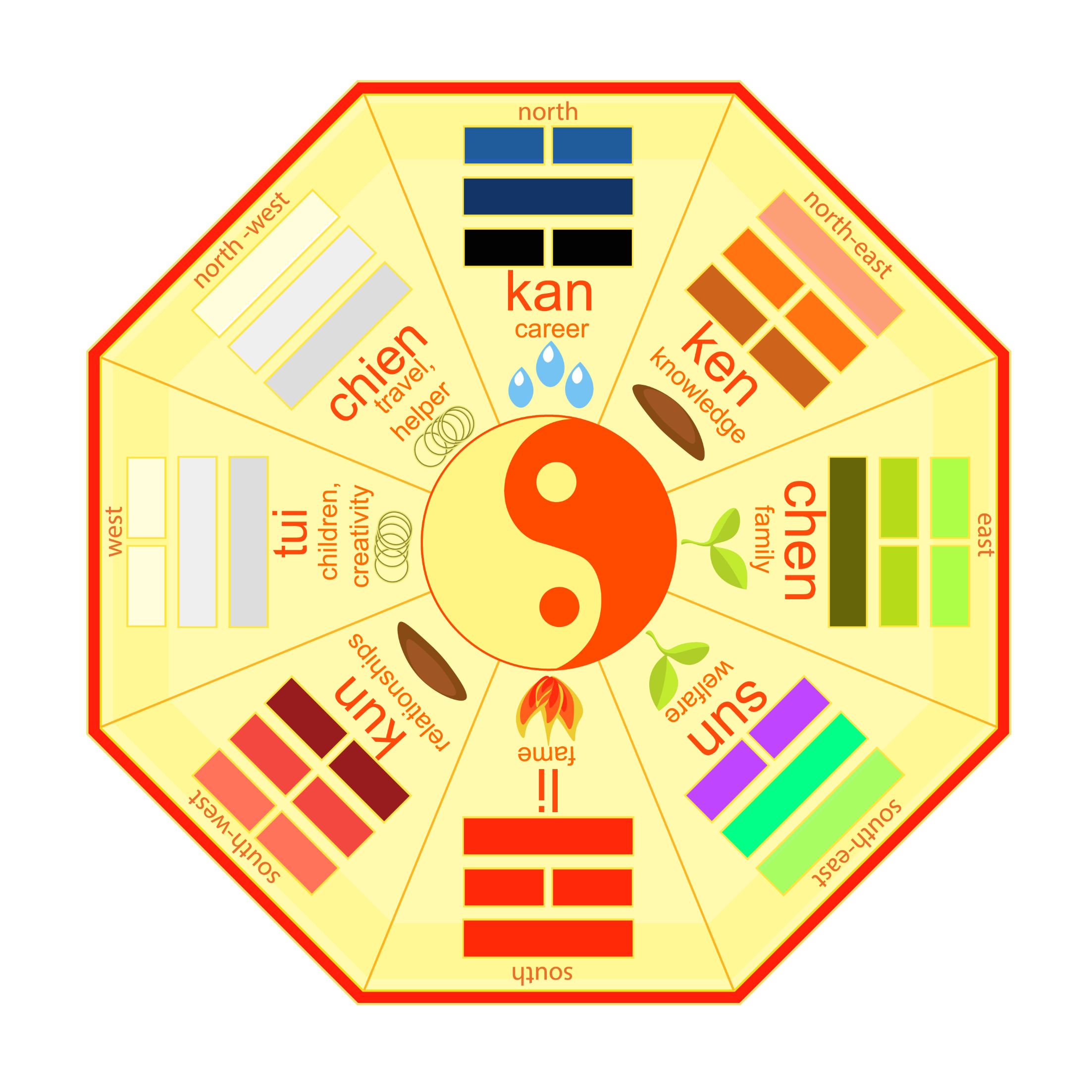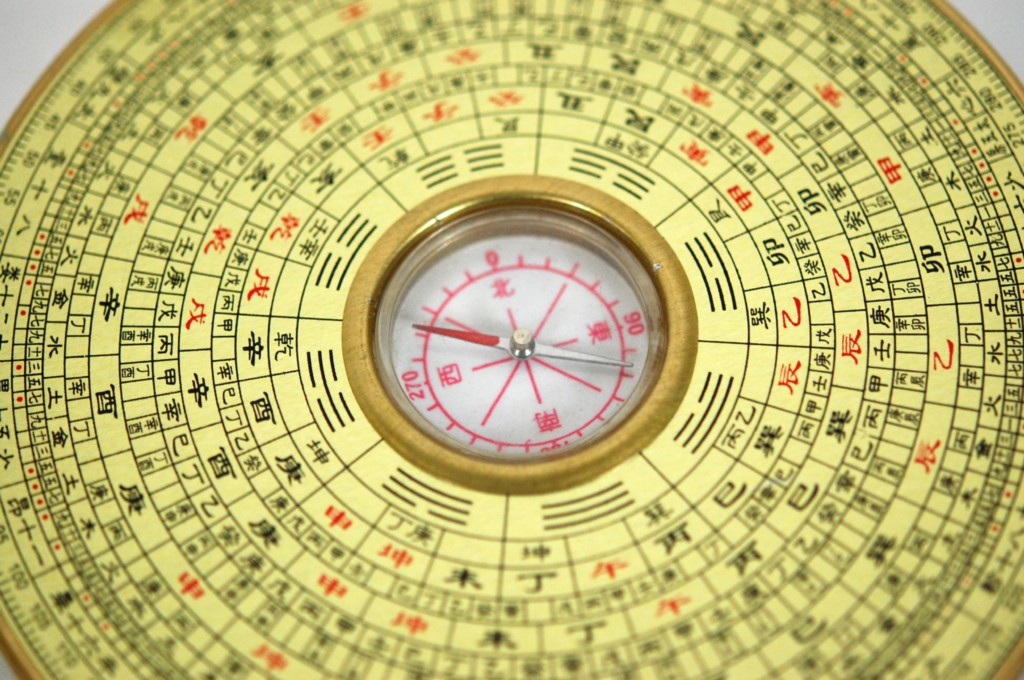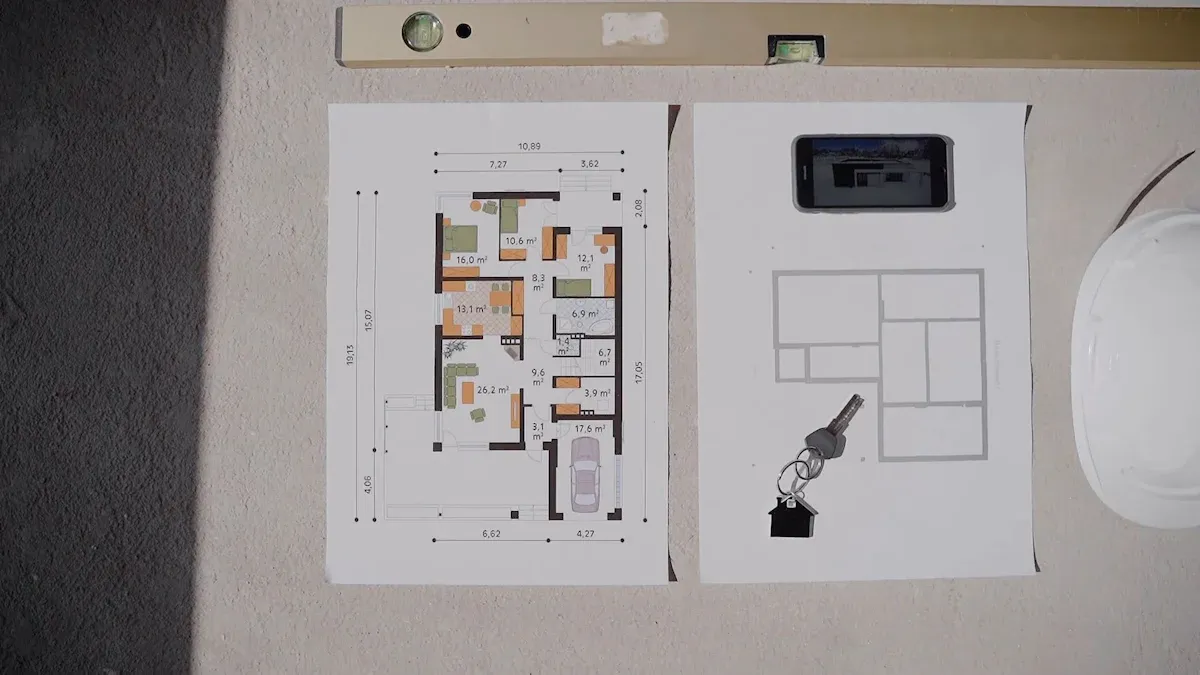You want to place bagua map on your floor plan for better feng shui in your home. Start by making sure you have a scaled drawing of your home. The bagua map helps you unlock the secrets of feng shui design. You can use the front door or compass method to line up the bagua map. Every home can benefit from feng shui design, even if your layout feels tricky. With a step-by-step approach, you will find bagua map placement simple and rewarding.
Key Takeaways
Begin with a floor plan that is drawn to scale. Make sure it shows every room and the main entrance. This helps you place the bagua map in the right spot.
You can use the front door alignment or compass alignment method. Pick the one that fits your home and what you want to achieve.
Put the bagua map on your floor plan. Mark the nine sectors to find areas like wealth, health, and relationships.
Change the bagua map if your home has an odd shape, more than one floor, or is an apartment. Focus on the main entrance and use smart ideas to keep energy balanced.
Keep your space tidy and remove clutter. Update the bagua map if you make changes. Use colors or objects to boost energy in each sector for better feng shui.
Place Bagua Map: Main Methods

When you want to place bagua map on your floor plan, you have two main options. You can use the front door alignment or the compass alignment. Both methods help you connect your home to the ancient wisdom of feng shui design. Each method uses the bagua map to link areas of your home to important parts of your life, like health, wealth, and relationships. The right method depends on your home’s layout and your personal goals.
Front Door Alignment
The front door alignment is the most popular way to use the bagua map. You start by lining up the bottom of the bagua map with the wall that holds your main entrance. This method treats the front door as the main entry point for energy. When you use this approach, you invite positive energy to flow into your home and support your well-being. Many famous places, like the Bank of China Tower and the Burj Al Arab Hotel, use this method to boost harmony and prosperity. You can use this method in most homes, especially if your front door is easy to find and faces a clear direction.
Tip: Place a bright color or a special symbol near your front door to attract good energy and protect your home.
Compass Alignment
The compass alignment uses the actual compass directions to place the bagua map. You find the center of your home, then use a compass to mark north, south, east, and west. Next, you match each section of the bagua map to the correct direction. This method works well if you want to connect your home to the natural world and the flow of energy outside. Feng shui design experts often use this method for homes with unusual layouts or when you want to focus on a specific direction for personal growth.
Choosing the Right Method
You might wonder which method fits your home best. If your front door is easy to spot and faces a main street, the front door alignment usually works well. If your home has a complex shape or you want to focus on a certain direction, try the compass alignment. Both methods help you guide energy flow and support your goals. The bagua map gives you a clear path to better feng shui design, no matter which method you choose.
Preparing Your Floor Plan
Before you place the Bagua map, you need to get your floor plan ready. This step makes everything easier and helps you avoid mistakes later. Let’s break it down.
Get a Scaled Floor Plan
Start with a floor plan that shows your home’s layout as accurately as possible. You want a drawing that matches the real size and shape of your space. Most people use common scales like 1:100 or 1:50, which means every centimeter or inch on the paper stands for a certain amount of space in your home. Using a scaled floor plan helps you see where each room sits and keeps everything in the right spot. If you skip this step, you might end up placing the Bagua map in the wrong area.
Here’s a quick look at some common scales:
Scale |
Typical Use Case |
|---|---|
1:100 |
Floor plans, elevations |
1:50 |
Detailed floor plans |
1:20 |
Sections, detailed drawings |
1:10 |
Small components, details |
1:200 |
Small site plans |
Tip: Always double-check your measurements with an architect or designer if you can. This helps you avoid errors and keeps your floor plan accurate.
Include All Living Spaces
Don’t leave out any rooms or areas. Your floor plan should show every living space, even small ones like closets or hallways. Sometimes, people guess the layout from memory, but this can lead to mistakes. Drawing from an actual floor plan or measuring each room gives you the best results. This way, you make sure the Bagua map covers your whole home and nothing gets missed.
Add bedrooms, bathrooms, kitchens, and even balconies.
For apartments, include every part you use daily.
Mark the Main Entrance
Find your main entrance and mark it clearly on your floor plan. The front door is where energy enters your home, so it’s important for Bagua placement. Rotate your floor plan so the wall with the front door sits at the bottom. This makes it easier to line up the Bagua map later. When you know exactly where your entrance is, you can match the Bagua areas to the right spots in your home.
How to Place Bagua Map on Floor Plan
Aligning with the Front Door
You can start placing the bagua map by using your front door as the main guide. This method feels simple and works for most homes. Experts say the front door is the main spot where energy enters your space. When you stand at your front door, you invite new energy into your home. The first floor and the front door matter most because they set the tone for energy flow in every room.
To place bagua map with this method, follow these steps:
Stand at your main entrance. Look into your home from the front door.
Imagine the bagua map as a tic-tac-toe grid. The bottom edge of the map lines up with the wall that holds your front door.
Lay the bagua map over your floor plan, making sure the bottom edge matches the front door wall.
Each square or sector of the bagua map now covers a part of your home. The far left corner from the entrance is the Wealth and Prosperity area. The center top is Fame and Reputation.
If your home has more than one entrance, use the one you use most often.
Tip: Trust your gut when you place bagua map. If a sector feels off, adjust it a little until the energy flow feels right.
Research shows that using feng shui principles, like aligning the bagua map with the front door, can boost your mood and even help your heart rate. When you activate the Wealth and Prosperity sector with bright colors or special symbols, you invite abundance. The Fame and Reputation sector near the front door helps you shine and get noticed.
Aligning with Compass Directions

Some homes need a different approach. If your layout feels tricky or you want to connect with the natural world, try the compass method. This way, you use the real compass direction of your home to guide the bagua map.
Here’s how you do it:
Find the center of your home on your floor plan.
Use a compass to check the direction your home faces. Take a few readings to make sure you get it right.
Each sector of the bagua map matches a compass direction. For example, South covers 157.5°–202.5°, and Southwest covers 202.5°–247.5°.
Instead of a square grid, imagine the bagua map as an 8-section pie chart. Lay this chart over your floor plan, starting from the center.
Match each sector to the right direction. This helps energy flow in a natural way, just like it moves in the world outside.
Note: The compass method works best if you want to focus on a certain direction or if your home has an unusual shape. It also helps you connect your space to the world around you.
This method comes from classical feng shui schools. Experts say that using a pie chart instead of a square grid matches the way energy moves in real life. The center of the bagua map acts as a control point for energy flow, not a place you need to change.
Drawing the Bagua Map Grid
Now you’re ready to draw the bagua map grid on your floor plan. This step helps you see which parts of your home match each sector. You can spot areas where energy feels stuck or missing.
Follow these steps for laying the bagua map grid:
Get a scaled floor plan. This keeps everything accurate.
Place bagua map over your floor plan. Use either the front door or compass direction method.
Draw the grid or pie chart on top of your floor plan. Make sure each sector lines up with the right direction or entrance wall.
Mark the nine sectors (Guas) on your plan. Each one stands for a part of your life, like health, wealth, or relationships.
Look for spots where energy flow feels weak or blocked. These are places you can fix with feng shui cures, like adding color, light, or special objects.
Callout: The bagua map is a tool. It helps you find places where energy gets stuck. When you fix these spots, you help energy flow better in your home and your life.
Applying the bagua map this way lets you see your home in a new light. You can spot missing sectors or places that need more energy. When you finish, you’ll have a clear guide for making your space feel balanced and full of good energy.
Bagua Map for Irregular Layouts

L-Shaped and U-Shaped Homes
Not every home looks like a perfect square or rectangle. If you have an L-shaped or U-shaped home, you might wonder how to use the bagua map. Most experts suggest you start by finding the center of your home. Place the bagua map so it covers the whole space, even if some parts stick out or feel empty. You can line up the map with your front door or use a compass, just like with regular layouts. Sometimes, a sector might fall outside your main living area. In that case, imagine the bagua map as a guide and focus on the heart of your home. This way, you still connect each sector to your life, even if your home shape is unique.
Tip: If a sector lands in a missing corner, you can use plants, lights, or mirrors to bring energy back to that spot.
Multiple Floors
Many homes have more than one floor. You can use the bagua map on each level. Start with the main floor, then repeat the process for upstairs or downstairs. Always line up the map with the main entrance for each floor. This helps you see which sector covers each room. For example, your career area might be in the entryway on the first floor and in a bedroom upstairs. Treat each floor as its own map, but remember the main entrance sets the tone for the whole home.
Missing Sectors and Extensions
Sometimes, your home has missing corners or extra spaces that stick out. When a sector is missing, you might feel something is off in that part of your life. You can fix this by adding a garden, a light, or a special object outside the missing area. If you have an extension, include it in your bagua map. Every part of your home matters, so try to balance energy in each sector. If your reputation area is missing, you can place a bright light or a red object nearby to boost that part of your life.
Apartments and Open Layouts
Apartments and open layouts need a little creativity. Experts like Lien Luong and Andrea Finck say you should use the bagua map as a flexible tool. You can start by placing the map over your whole apartment, lining it up with your main door. If you have a big open space, divide it into zones using rugs, plants, or furniture. Focus on areas that feel out of balance. You do not need to fix everything at once. Try small changes in one sector, like the career area, and see how the energy shifts. Customizing the bagua map helps you create harmony, even in tricky spaces.
Remember: The bagua map works best when you make it fit your home and your life. Trust your instincts and have fun with the process! 🏡
Tips and Common Mistakes
Accurate Alignment
Getting the bagua map lined up right makes a big difference in your feng shui design. If you want to boost energy in your home, follow these steps:
Draw a detailed floor plan of your home, showing all rooms, hallways, and entrances.
Place the bagua map over your floor plan, with the front door at the bottom.
Divide your home into nine equal sections. Each one matches a part of your life, like wealth or relationships.
Label each section with the right life aspect.
Check each area for clutter or things that block energy.
Make changes, like moving furniture or adding plants, to help energy flow.
Add special objects to attract good energy to each area.
Keep checking and adjusting your home as things change.
Realign the bagua map after big changes, like moving furniture or remodeling.
If you want the most accurate results, some experts use the Classic Xuan Kong Fei Xing method. This style of feng shui design looks at time, space, and who lives in the home. It can help you keep energy balanced as your life changes.
Tools and Resources
You do not need fancy tools to use the bagua map, but a few things can help. Try using a digital app like Vision Board ++. This app lets you create vision boards for each area of the bagua map. You can add pictures, set goals, and track your progress. Printable templates also help you see how each part of your home matches the bagua map.
When you set up your workspace, place your desk so you can see most of the room. Add healthy plants like lucky bamboo or peace lilies to boost energy in certain areas. Stay away from sharp plants, like cacti, because they can block good energy. Use the bagua map to guide where you put things in your home for better feng shui design.
Avoiding Errors
Many people make the same mistakes when using the bagua map. Here are some things to watch out for:
Skipping rooms or forgetting small spaces on your floor plan.
Not lining up the bagua map with the front door or compass directions.
Ignoring clutter, which can block energy in your home.
Forgetting to update the bagua map after big changes.
Using sharp or unhealthy plants in feng shui design.
Tip: Always check your floor plan and bagua map after you move furniture or remodel. Small changes can shift the energy in your home.
If you keep these tips in mind, you will find it easier to create a balanced and happy space with feng shui design.
You can place the bagua map on your floor plan with just a few easy steps. First, get a scaled drawing. Next, overlay the bagua map and line it up with your front door. Mark the nine sections and spot any areas where energy feels stuck. The bagua map now comes in a square shape, so it fits modern homes better. Many people use apps or color-coded guides to make the bagua map process even simpler. With a little patience, you will see how the bagua map brings balance and harmony to your space. Give it a try and watch your home transform!
FAQ
What if my home has more than one entrance?
You should use the door you use most often as your main entrance. This entrance sets the energy for your home. Place the bagua map using this door as your guide.
Can I use the bagua map in just one room?
Yes! You can place the bagua map over a single room. Line up the bottom of the map with the main door to that room. This helps you balance energy in small spaces.
Do I need special tools to place the bagua map?
You do not need fancy tools. A ruler, a printed bagua map, and a compass app on your phone work well. These help you keep everything lined up and accurate.
How often should I update my bagua map?
Update your bagua map when you move furniture, remodel, or feel a change in your home’s energy. Checking it once a year is a good habit.
Tip: Trust your feelings. If a space feels off, it might be time to check your bagua map.










